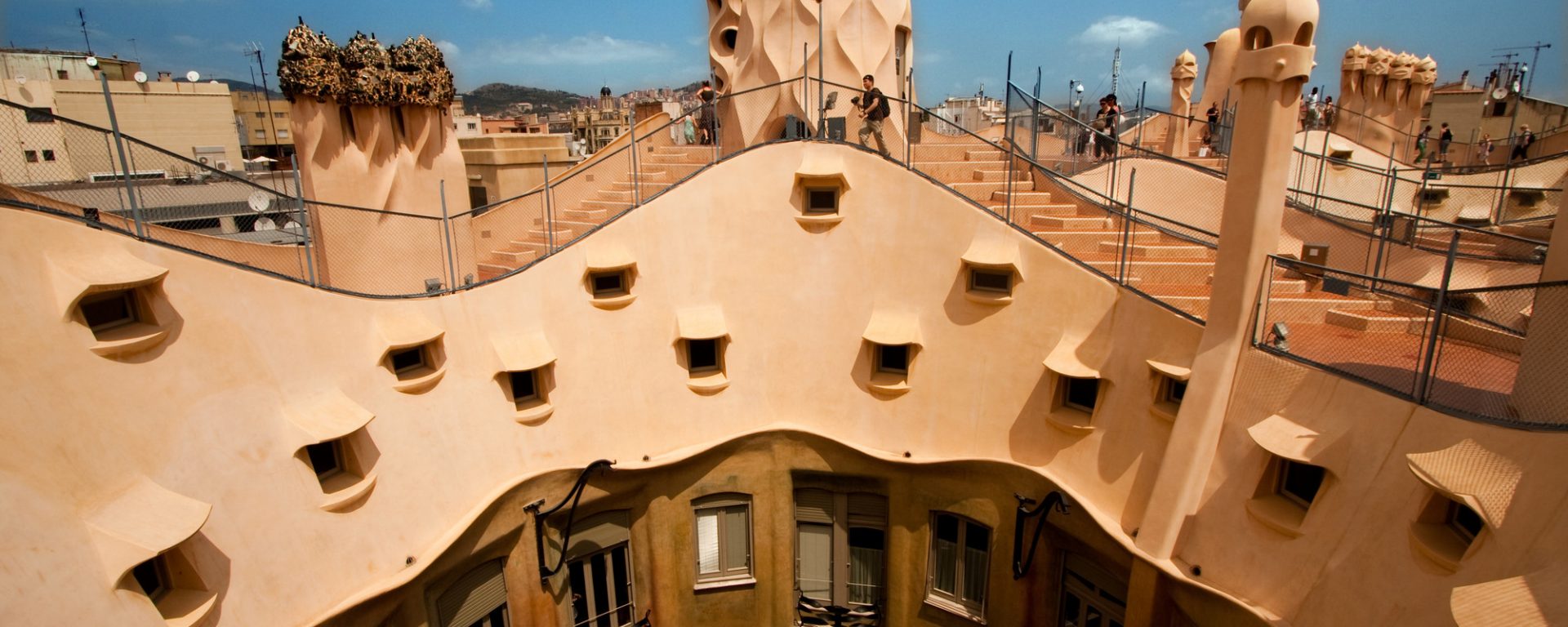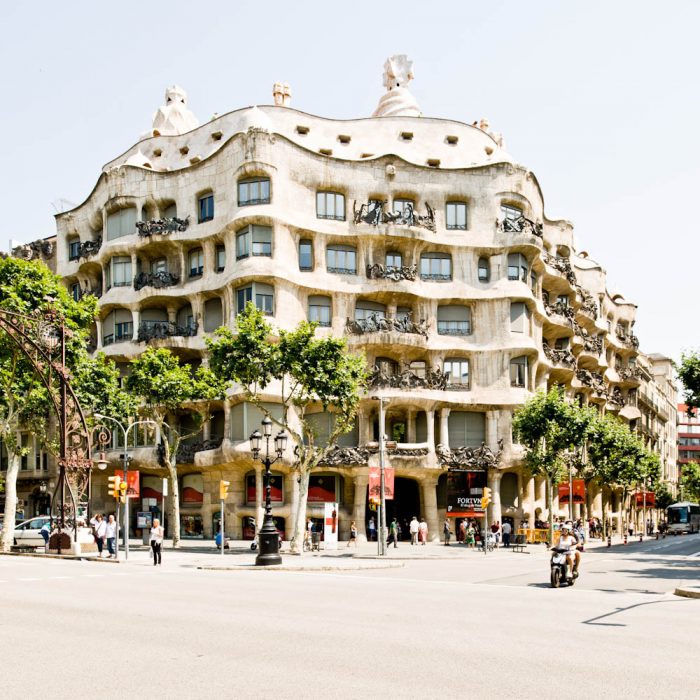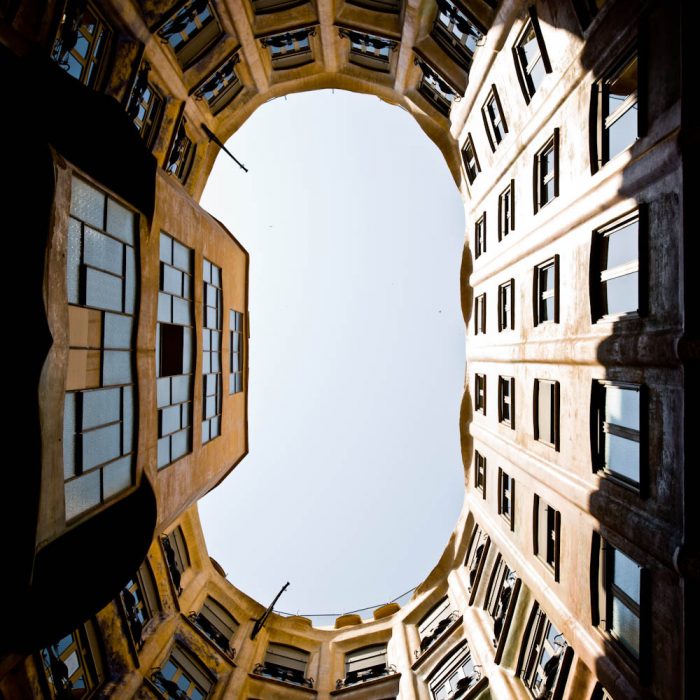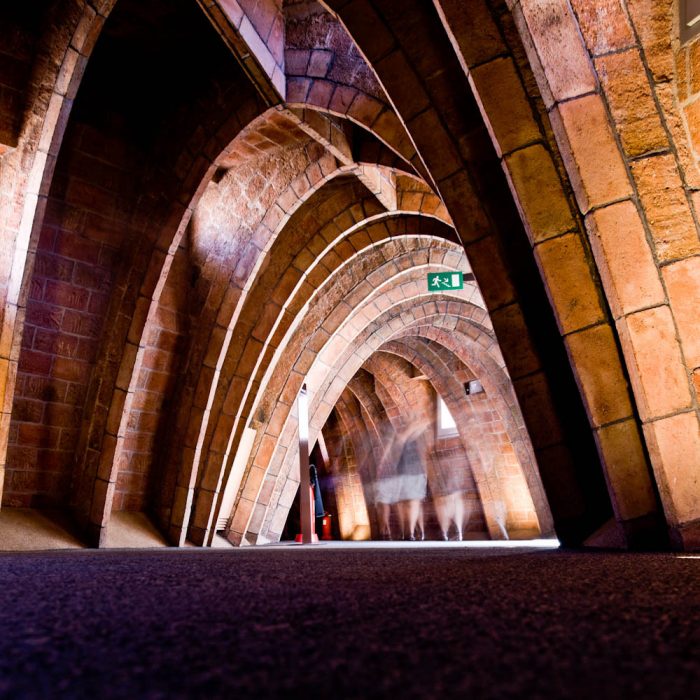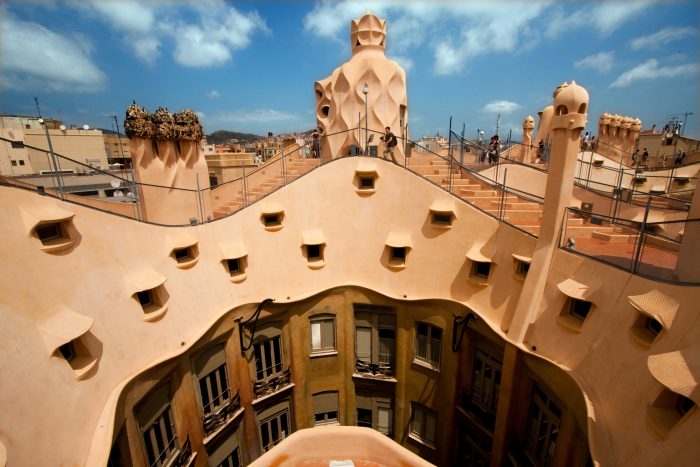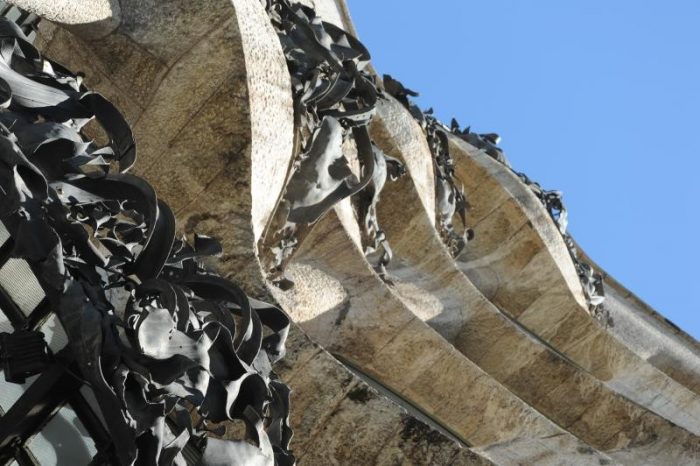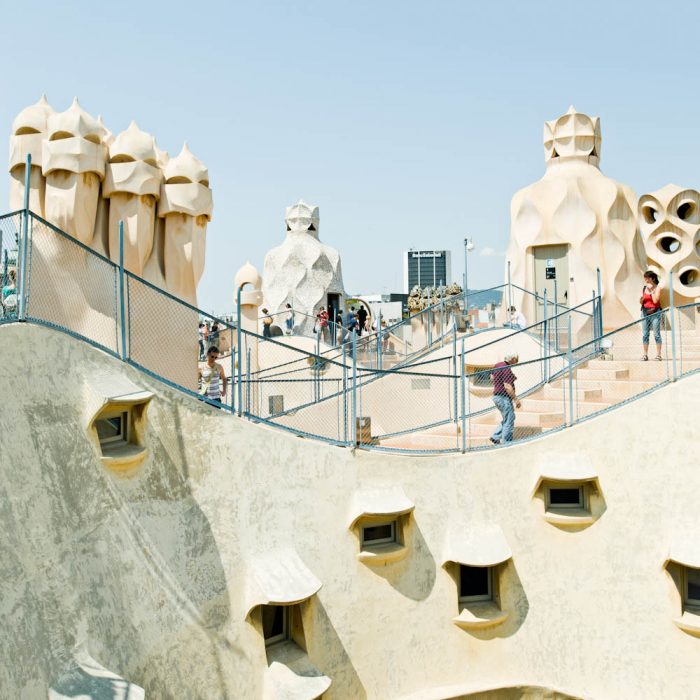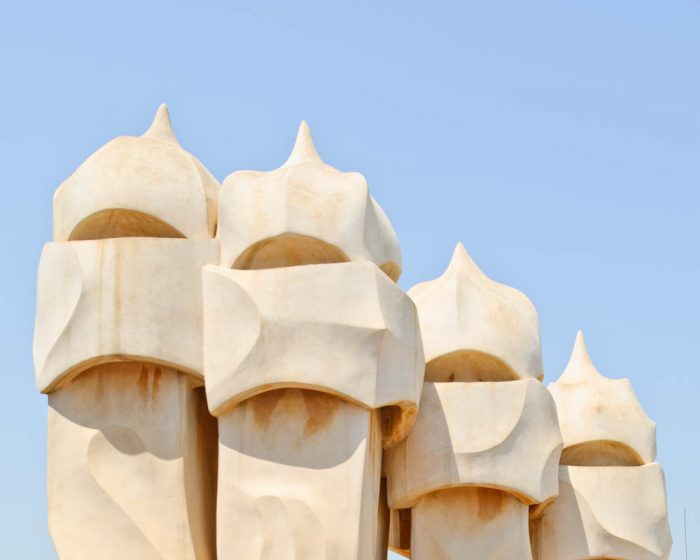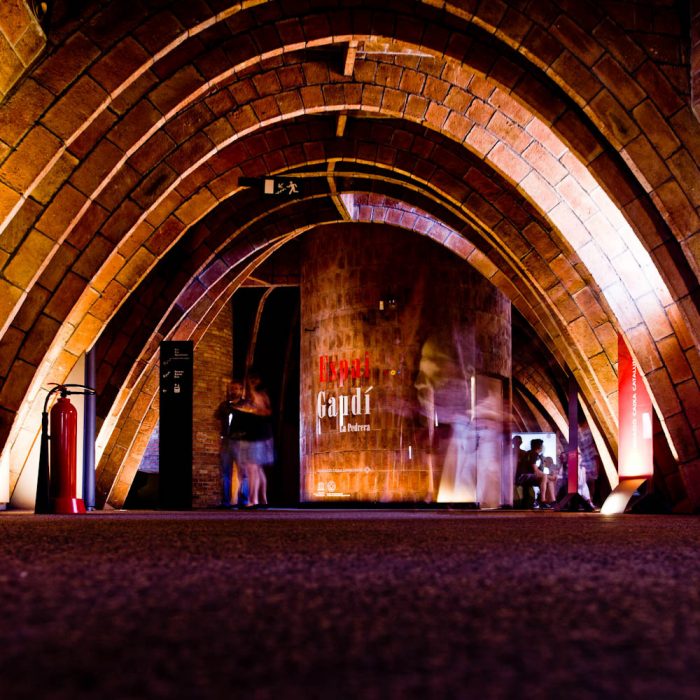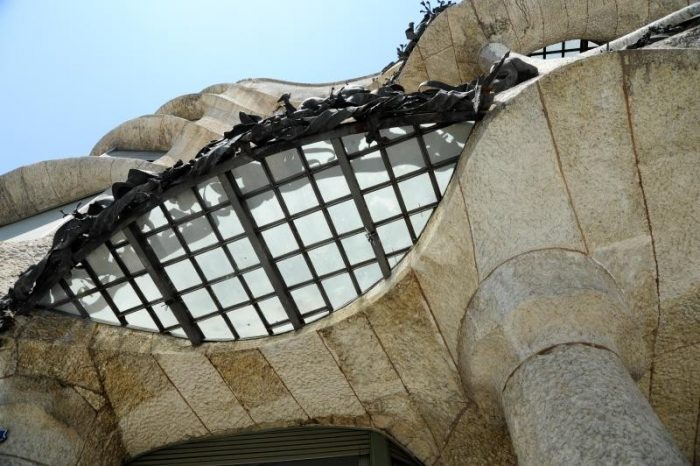安东尼-高迪的Casa Milà以其波浪形的立面和超现实主义的雕塑屋顶,看起来更像是有机的而不是人工的,仿佛它是直接从地面上雕刻出来的。被称为La Pedera,采石场,该建筑的灵感来自现代主义运动,西班牙的新艺术版本。
该建筑于1912年为Roser Segimon和Pere Milà建造,共分为九层:地下室、底层、夹层、主层、四层以上和阁楼。底层作为车库,夹层作为入口,主层供米拉夫妇使用,上层则用于出租。建筑围绕着两个内院,使其在平面上形成一个八字形。屋顶上是著名的雕塑平台。实际上,它容纳了天窗、紧急楼梯、风扇和烟囱,但每个功能的围护结构都具有自主的雕塑品质,已经成为建筑本身的一部分。
With its undulating façade and surrealist sculptural roof, Antoni Gaudi’s Casa Milà appears more organic than artificial, as if it were carved straight from the ground. Known as La Pedera, the quarry, the building was inspired by the Modernista movement, Spain’s version of Art Nouveau..
Constructed in 1912 for Roser Segimon and Pere Milà, the building is divided into nine levels: basement, ground floor, mezzanine, main floor, four upper floors, and attic. The ground floor acted as the garage, the mezzanine for entry, the main floor for the Milàs, and the upper floors for rent. The building surrounds two interior courtyards, making for a figure-eight shape in plan. On the roof is the famous sculpture terrace. Practically, it houses skylights, emergency stairs, fans, and chimneys, but each function’s envelope takes on an autonomously sculptural quality which has become a part of the building itself.
在结构上,建筑分为结构和表皮。石材立面没有承重功能。具有相同曲率的钢梁通过附着在结构上,支撑着外墙的重量。这使得高迪在设计立面时不受结构的限制,最终实现了他对连续曲面立面的构想。托起屋顶的结构,也使之成为一个有机的几何体。由270个高低不一的抛物线砖拱组成,脊椎状的肋骨结构在上面形成了多变的地形。
Structurally, the building is divided between structure and skin. The stone façade has no load-bearing function. Steel beams with the same curvature support the facade’s weight by attaching to the structure. This allowed Gaudi to design the façade without structural constraints, and ultimately enabled his conception of a continuously curved façade. The structure holding up the roof, too, allows for an organic geometry. Composed of 270 parabolic brick arches of varying height, the spine-like rib structure creates a varied topography above it.
从形式上看,立面可以分为三个部分:街道立面,横跨底层;主立面,包括主层和上层;屋顶结构,容纳阁楼并支撑屋顶花园。主立面的曲线由石灰石块制成,具有重量感和质感的有机质感。在它的上方,是一个曲线的体量,上面有超现实主义的拟人雕塑。它们的出现为建筑的美学带来了几乎流动的活力。
Formally, the façade can be read in three sections: the street façade, spanning the ground floor; the main façade, including the main and upper floors; and the roof structure, which houses the attic and supports the roof garden. Made of limestone blocks, the curve of the main façade has a weighty and textured quality of the organic. Above it is a curvaceous mass on which surrealist anthropomorphic sculptures perch. Their presence contributes to the almost flowing dynamism of the building’s aesthetic.
米拉之家最终成为一座有争议的建筑,它为现代主义运动和整个现代主义做出了巨大贡献。它突破了直线性的形式界限,由于高迪有意从自然和有机形式中汲取建筑的形状,极大地启发了生物模仿的实践。高迪是一个结构和形式的天才,米拉之家证明了这一点。
The Casa Milà, which was ultimately a controversial building, contributed greatly to the Modernista movement and modernism as a whole. It pushed formal boundaries of rectilinearity and, as Gaudi intentionally drew from natural and organic forms for the building’s shape, significantly inspired practices of biomimicry. Gaudi was a genius of structure and form, and the Casa Milà attests to that.
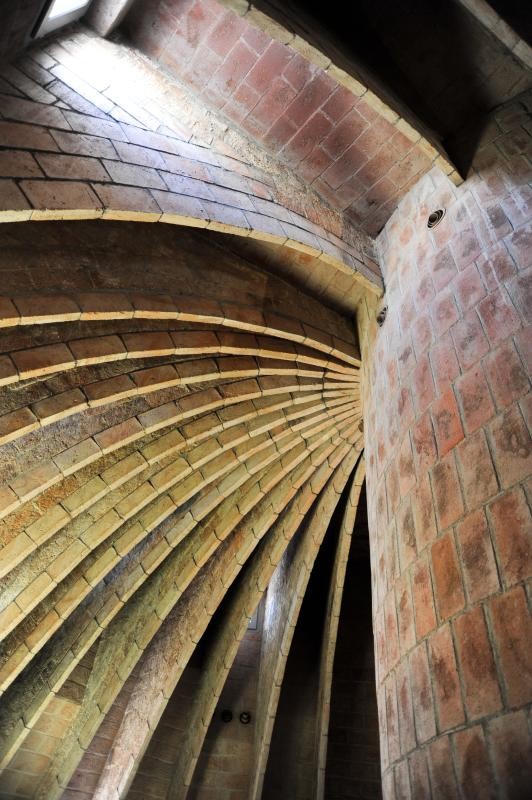
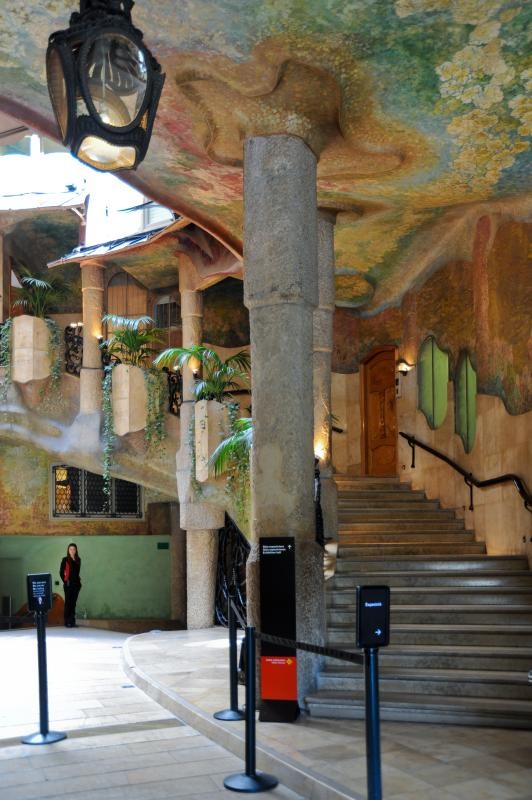
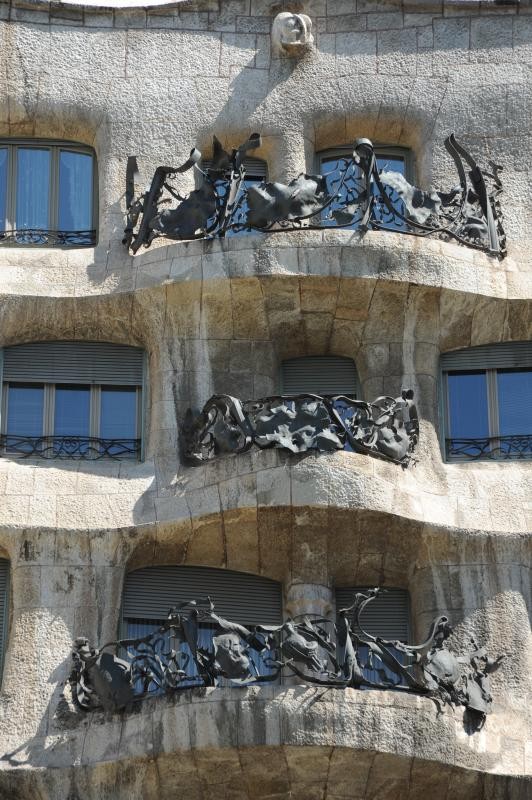

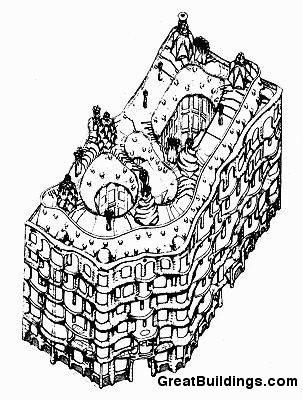

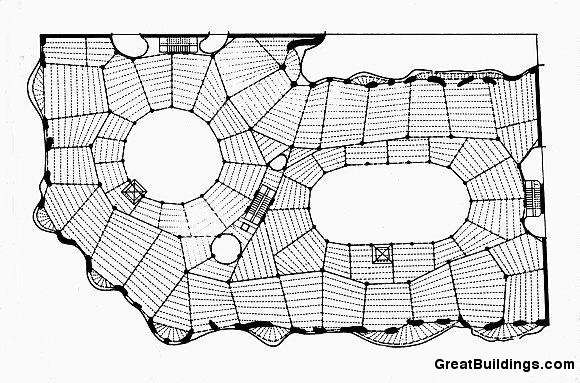
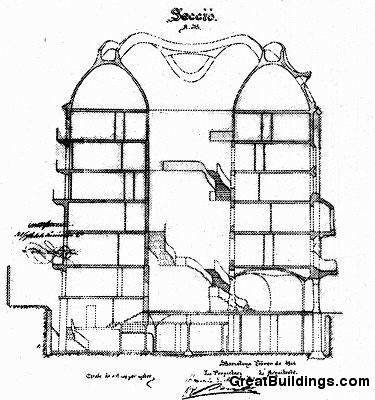

建筑师:Antoni Gaudí
年份:1912年
照片:Samuel Ludwig, Usuario de Flickr: jacqueline.poggi, Gideon Jones
制造商:FAPRESA, Gradhermetic, Proquinal, Spradling México
城市: BARCELONA
国家:西班牙
Architects: Antoni Gaudí
Year: 1912
Photographs: Samuel Ludwig, Usuario de Flickr: jacqueline.poggi, Gideon Jones
Manufacturers: FAPRESA, Gradhermetic, Proquinal, Spradling México
City: BARCELONA
Country: SPAIN

